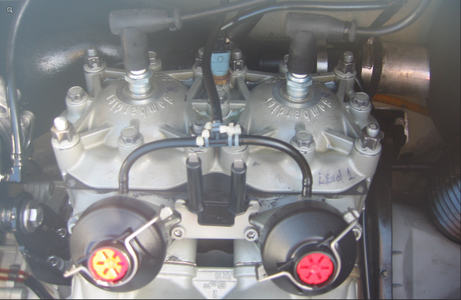thejuice48
Active Member
Two reasons on the 951.
1. The carbs are mounted low in the hull and with open air filters they can and do suck in water which will ruin a 951.
2. They reduce the intake vacuum signal making the already lean 951 carbs even more lean. A lean 2-stroke is not a happy 2-stroke.
951 carbs explained by Group K....
Flame Arrestors – While the installation of aftermarket flame arrestors has been a very popular modification for many recreational pwc’s, we do not use or recommend them on our Swift Kit or Y2K Sleeper Kit. The technical reasoning for this choice is related entirely to the stock carbs used on the 951 engines. The carbs used on all 951s are the first generation of a carburetor that is designed as much for emissions friendliness as it is for performance. Among the most notable design features that make this difference, is the significantly increased distance between the butterfly and the “booster venturi” style fuel atomizer (aka “bombsight” atomizer). We cannot claim to know all the effects of this design departure, however we know a lot about one particular effect called “fuel delivery signal”.
In short, signal is the amount of vacuum within the inlet tract that helps to draw fuel from the metering circuits in the carburetor. The air restriction of the stock flame arrestor serves greatly to keep that vacuum very high. This high vacuum actually helps the quickness of throttle response at all engine speeds. When a free breathing flame arrestor is installed, this vacuum (aka signal) is reduced. The reduced signal means a slightly leaner fuel mixture through the entire range. This is normally not a dangerous issue for most pwc engines. However the emissions-conscious stock 951 carbs have an exceptionally weak signal at ¾ throttle opening. This means that a more open arrestor will cause the 70 – 80% throttle range become “a lot” leaner than the rest of the range. There is no jetting that can solve this problem (we tried). The “only” effective solution is to leave the stock flame arrestor (with the bolt on air horns) intact. Despite the restrictive appearance of the stock arrestor, it can easily pass enough air volume for excellent performance up to the 7140 rev limiter. The stock arrestor has received an undeserved reputation as “choking” the 951 into a bad rich condition. In truth, the rich condition is a correctable jetting issue, not an air access issue.
I have never ran into a lean condition issue or piston damage to due sucking water that I know of.
PPG milled the head, did the flame arrestors (Level I) in 2006/2007 with over 300 hours on the original engine. The top end then basically blew up and they blamed it on the number of hours. Then it blew up again during break in period, with 3 - 5 hours which they tried to say I was riding it too hard and I wasn't. Then they replaced top end and said the crank blew so they put in a racing crank. So the ski has a new top end, new crank. When I took it for the break in maintenance, I caught them doing an "oil change" on my two stroke engine which I had just filled with the fully synthetic bombardier oil at the time. It later changed to semi-synthetic so I drained and switched to Amsoil. I yelled, screamed, bitched moaned, and quit taking it to PPG. The engine gremlins seem to have disappeared after that.
I have had flame arrestors on it (rather than the factory airbox) since approximately 2007. I inspected the pistons and head in 2011 and again in 2016. No pitting or damage to the cylinders or pistons which would be indicative of a lean condition.
Generally though, I don't have water running through my hull. If I see an inch in there without me putting it there, I fix the problem. When I have put water in the hull to cleanse it, I never put any water in there past the center indent and even then it has been on a trailer where I could suck the water out with a wet vac and open the drain plugs.
I love CRC 6-56 rather than bombardier fogger and stuff like that. Seafoam Deep creep for really bad break loose quick stuff.
Last edited:




